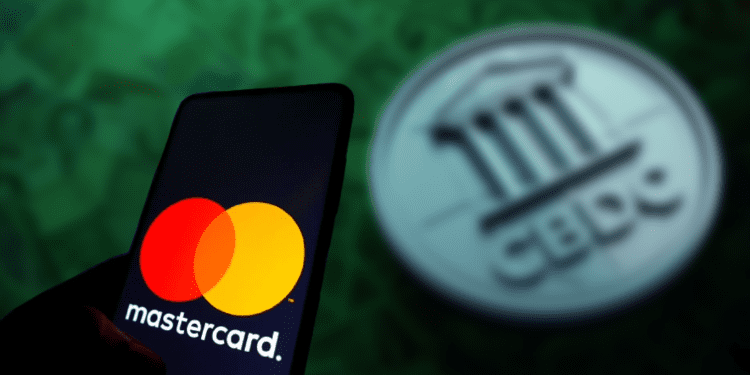- Mastercard has successfully completed a trial of wrapped central bank digital currencies (CBDCs) on various blockchains, showcasing the potential for using blockchain technology in innovative ways.
- The trial, conducted in collaboration with the Reserve Bank of Australia (RBA) and other partners, demonstrated the ability to lock a pilot CBDC on the RBA’s platform and mint an equivalent amount of wrapped CBDC on Ethereum to purchase a nonfungible token (NFT).
- Mastercard’s Multi Token Network, a blockchain technology, was utilized during the trial, aiming to integrate payment technology with blockchain and explore new possibilities for commerce while addressing fraud and documentation issues.
Payment giant Mastercard has announced a successful trial accomplishing a flourishing wrapped central bank digital currencies (CBDCs) on different blockchains, which could potentially expand the use cases of blockchain technology in the future.
Trial Details
Mastercard completed the trial in partnership with the Reserve Bank of Australia (RBA), Digital Finance Cooperative Research Centre CBDC, Cuscal, and Mintable. The task involved locking a required amount of a pilot CBDC on the RBA’s platform and minting an equal amount of wrapped pilot CBDC on Ethereum to purchase a nonfungible token (NFT), thus demonstrating the platform’s ability to implement controls even on public blockchains.
Mastercard’s Multi Token Network
The solution used Mastercard’s Multi Token Network, a blockchain technology introduced in June 2023. The technology aims to integrate payment technology with blockchain and has identified a use case whereby digital currencies and NFTs can easily be linked, leading to potentially stamping out fraud and theft, ending the loss of documentation and records, and unleashing new possibilities for commerce, as per Zack Burcks, CEO, and founder of Mintable.
The RBA has previously suggested that an Australian dollar CBDC could enable complex payment arrangements and drive innovation in the finance sector that cannot be substituted by fiat money. However, the central bank has added that further research is necessary to assess the potential advantages.
Conclusion
Mastercard’s successful trial provides a significant boost towards unlocking the potential of CBDCs and expanding the use cases of blockchain technology. The application of the technology displayed how it could enable controls on public blockchains to prevent the transfer of wrapped pilot CBDC while allowing the purchase of NFTs, generating the potential to prevent fraud, loss of documentation and records, and create new opportunities for commerce.














